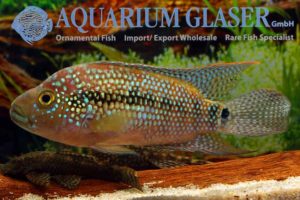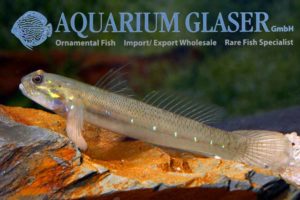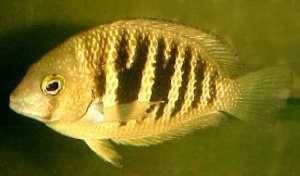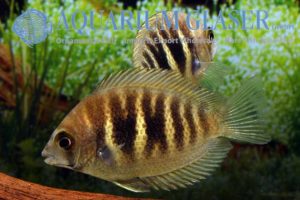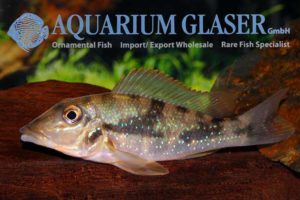This goby from the lower reaches of the river Ganges belongs clearly to the category “faces that can be loved only by a mother”. Despite the look the fish that can reach up to 25 cm in length are very interesting. One should be careful with possible tankmates. Any fish that fits the mouth will […]
25. Perchlike fishes (906)
-
-
Dario hysginon (2)
The species of Dario – the Dwarf Badis – are in one respect comparable to their larger cousins of the genus Badis: they are Chameleon fish! Depending on mood or light the colours change a lot and fast. We have once more the Flame Red Dario, D. hysginon, from Burma in stock. The species becomes […]
-
Apistogramma cacatuoides Mega Orange
An orange sport of the cockatoo dwarf cichlid is already known for quite a long time. But now we received for the first time a new strain that has really wonderful orange coloration. The breeder calls it “Mega Orange” – and we agree! For our customers: the fish have code 617343 on our stocklist. Please […]
-
Pelvicachromis taeniatus Bipindi
Currently we can offer a great number of wild collected varieties of P. taeniatus from different localities in Cameroon. The local variety from Bipindi is characterized by a high degree of yellow colours, the females get a wonderful blue belly when displaying. For our customers: the fish have code 562702 on our stocklist. Please note […]
-
Macropodus erythropterus
Not much has been heard in the past few years about this beautiful paradise fish from Vietnam. This might be connected with the dispute about the validity of the species which has been considered to be a mere synonym of M. spechti (formerly: M. concolor) by some scientists. We recently obtained bred specimens that clearly […]
-
Apistogramma sp. Xingu / Vielfleck
We received wonderful, fully grown bred specimens of this beautiful dwarf cichlid. The species is still undescribed scientifically. For our customers: the animals have code 628744 on our stocklist. Please note that we exclusively supply the wholesale trade. Text & photos: Frank Schäfer
-
Betta splendens KOI
For the first time ever we could import a few specimens of this spectacular new sport. This is the first sport of Betta splendens that has been selected especially for the look from the top. Alike in Koi only very few specimens among thousands of offspring have a coloration that make a common Betta splendens […]
-
Betta splendens KOI
Again we could import a few specimens of this spectacular new sport. We received short finned ones (“Half Moon Pla Kat”) and veiltails (“Super Delta”). This is the first sport of Betta splendens that has been selected especially for the look from the top. Alike in Koi only very few specimens among thousands of offspring […]
-
Hypselecara temporalis OYAPOC
The Emerald cichlid has become a bit out of fashion. This is a quite sad thing, for this impressive large cichlid – males can become up to 30 cm long, females always stay much smaller – is one of the most beautiful species of cichlid of South America. For the first we can offer now […]
-
Boleophthalmus boddarti
The mudskippers (Oxudercinae) represent a subfamily on their own within the goby family (Gobiidae). One can observe all steps from “normal”, aquatic species (for example in the genus Apocryptes) to partially land-dwelling, amphibic species (Periophthalmus) within the Oxudercinae. Members of the genus Boleophthalmus don´t leave the water completely, but can be found in zones of […]
-
Aequidens (Nannacara) Neon Blue
For all aquarists that feel that Electric Blue Rams are too delicate and Rocio octofasciata “Blue Dempsey” too aggressive: here is an alternative breed from Singapore. The fish are sold under the name of “Nannacara Neon Blue”. Despite the fact that we are quite sure that these fish do not belong to the genus Nannacara […]
-
Apistogramma urteagai
This pretty dwarf cichlid from the Madre de Dios region in Peru is offered only very occasionally. The species is quite undemanding and thus a perfect subject for beginners who want to collect first experiences in keeping and breeding dwarf cichlids. A. urteagai does not require any special water conditions, this is another advantage of […]
-
Betta splendens Mustard Gas
There is no accounting for taste. But without any doubt the name “Mustard Gas”, which is one of the most disgusting chemical weapons, is a bad offense against good taste. The fish nevertheless are extremely beautiful. It is said that initially an US breeder named Jude Als has bred the first Mustard Gas Bettas. However, […]
-
Apistogramma uaupesi
This is without any doubts one of the most attractive dwarf cichlids. Fully grown males show a very variable coloration, a fact that led to different common names in the past, like “Rotkeil-Apistogramma” (which means “Red-Wedge-Apistogramma”) or “Blutkehl-Apistogramma” (which means “Blood-Throat-Apistogramma”). However, according to most current knowledge, all these varieties appear in the wild together […]
-
Heros severus Gold-Red-Spot
We obtained gorgeous, fully grown eyespot cichlids of that sport from a German breeder who kept them in a 1.800 liter tank. These fish are real eyecatchers! For our customers: the animals have code 661617 on our stocklist. Please note that we exclusively supply the wholesale trade. Available in limited numbers only! Text & photos: […]
-
Pelvicachromis silviae
Finally we were able once more to import this pretty dwarf cichlid (males become 7-8 cm long, females stay 15-25% smaller) from Nigeria. Before its official description under the name of P. silviae the species has been known by hobbyists for about 40 years as Pelvicachromis sp. aff. subocellatus. For our customers: the fish have […]
-
Benitochromis finleyi Mungo
This medium sized cichlid reaches a maximum length of about 12 cm. The very beautiful fish are pair-bonding oviphilic mouthbrooders. In repect of water chemistry the species is astonishingly adaptable. One should keep them in larger aquaria, for the fish can be become quite gruff against each other. For our customers: the fish have code […]
-
Geophagus altifrons Curua Una
All species of Geophagus are gorgeous fish, but G. altifrons – the species can be recognized by the shape of the lateral spot, which is always smaller than the diameter of the eye – is one of the most beautiful of all. We currently can offer German bred specimens which belong to the population of […]
-
Monodactylus argenteus
Are you planning already your tanks for the upcoming year? Maybe you try a brackish water tank? A large aquarium with a school of monos (Monodactylus argenteus) is a real eyecatcher and a perfect opportunity to learn about all the other interesting species that like it a bit salty. Text & photos: Frank Schäfer
-
Biotodoma cupido Peru
The small cichlid Biotodoma cupido – the species can attain a maximum length of about 12-15 cm, but is sexually mature already at 6-8 cm total length – is probably the species of cichlid with the widest distribution in Amazonia. However, experts are merrily discordant wether all the different looking populations represent only varieties of […]
-
Pseudapocryptes elongatus
We could import this charming goby once more from India. It is a kind of mudskipper, but does never leave the water completely. It only swims in very shallow water. Against each other these mudskippers are absolutely peaceful. They feed readily on any type of usual fishfood. The maximum length is around 20 cm, but […]
-
Discus Royal Blue Nhamunda Maracanha
We continue our journey through the magical world of recently imported wild collected discus with these magnificent animals. Available in very limited numbers only! You will find a small video of the fish on our facebook page: https://www.facebook.com/media/set/?set=vb.119893808211837&type=2 For our customers: the animals have code 731358 on our stocklist. Please note that we exclusively supply […]
-
Channa andrao
One of the smallest and most colorful species of snakehead has been described recently. Since about 12 years this fish is in the trade under the name of Channa sp. “Blue bleheri”. This mouthbrooding species becomes sexually mature at a length of about 8 cm. In the wild, they hardly ever become larger than 10 […]
-
Channa White Pearl Lemon
We were able to import this attractive snakehead for the first time ever. In all probability it is a sport of Channa argus. Thus we expect that these animals can reach a length of 30-40 cm, exceptionally even 90 cm. And this is the good news: with every centimeter the fish grow they become more […]
-
Betta unimaculata
We received beautiful, fully grown, about 8 cm long specimens of this peaceful, mouthbrooding Betta as German bred. Keeping these fish is problem free, but one should know that Betta unimaculata is an excellent jumper, for it lives in brooks in the wild. So the tank must be covered carefully. For our customers: the fish […]
-
Scalar Amapa Red Back
Code: 699668
-
Scalar Essequibo
It is a bit amazing, but the wild varieties of the angel fish appeared in the focus of aquarists only recently, despite the fact that angelfish are among the most popular oramental fish at all. A very pretty variety with many re spots occurs in the Essquibo river in Guyana. We get them as German […]
-
Omobranchus zebra
Once more we could import this charming freshwater blennie. For more information on the species, please see http://www.aquariumglaser.de/en/news/Omobranchus_zebra_en/ For our customers: the fish have code 439742 on our stocklist. Please note that we exclusively supply the wholesale trade. Text & photos: Frank Schäfer
-
Crenicichla sp. Inirida IV
For the first time ever we were able now to import another species of pike cichlid from the surroundings of Puerto Inirida in Colombia. This species is illustrated and described in the German book “Die Buntbarsche Amerikas Bd. 3” by Rainer Stawikowski and Uwe Werner as Crenichla sp. Inirida IV. This is also a very […]
-
Crenicichla sp. Inirida III (= Fire Spot)
Once more we were able to import a small number of this extraordinary beautiful pike cichlid. Many specimens are obviously fully grown already, the fish have sizes of 8 – 15 cm. For our customers: the fish have code 673583 (8-10 cm), 673584 (10-12 cm), and 673585 (12-15 cm). Please note that we exclusively supply […]
-
Rhinogobius formosanus
We could import this pretty brook-goby from Taiwan. The specific name of the fish refers to the old name of the island – Taiwan was formerly known as Formosa. The fish can attain a maximum length of about 8 cm. One should not keep them along with too small other fish, for the gobies may […]
-
Biotoecus dicentrarchus
We have very nice, healthy specimens of this extremely rare dwarf cichlid from Venezuela in stock. For more information, please see http://www.aquariumglaser.de/en/news/Biotoecus_special_en/ For our customers: the fish have code 634483 on our stocklist. Please note that we exclusively supply the wholesale trade. Available in very limited numbers only! Text & photos: Frank Schäfer
-
Hemichromis sp. Firelips
We received from a German breeder these pretty Jewel Cichlids. The fish cannot assigned to any species that is scientifically described. Possibly it represents a hybrid. If so, it is a very well done cross! The lateral spot that is so typical for most species of Jewel Cichlid is missing completely. The bright red lips […]
-
Nanochromis transvestitus
We obtained beautiful bred specimens of this charming dwarf cichlis. Males of the species becomes around 6 cm long, females stay smaller. This makes Nanochromis transvestitus one of the smallest cichlid species at all. The species originates from the Lac Mai Ndombe region in the D.R. Congo. In contrast to most other congolese fishes, N. […]
-
Satanoperca jurupari Tocantins
We received very nice, approximately 15 cm long Satanoperca jurupari from the Rio Tocantins in Brazil. This eartheater is only seldom available. For our customers: the fish have code 678506 (12-15 cm) and 676507 (14-17 cm) on our stocklist. Please note that we exclusively supply the wholesale trade. Available in limited numbers only! Text & […]
-
Apistogramma agassizii Super Fire Red
We received extraordinary beautiful specimens of this sport. Available in limited numbers only! For our customers: the animals have code 614883 on our stocklist. Please note that we exclusively supply the wholesale trade. Text & photos: Frank Schäfer
-
Colisa cf. labiosa INLE
These gouramis belong to a scientifically still undescribed species, which is close to C. labiosa. The parents of our fish have been collected during a private collecting trip in Burma in Lake Inle. Our specimens are adult German bred ones. Very nice fish! The maximum length of the species is around 8 cm. For our […]
-
Apistogramma sp. STEEL BLUE
We received German bred ones of this magnificent Apistogramma. Very colorful! For our customers: the fish have code 628613 on our stocklist. Please note that we exclusively supply the wholesale trade. Text: Frank Schäfer, photos: Frank Schäfer, Rainer Hoyer
-
Laetacara araguaiae
Finally we were able to import once more this charming dwarf cichlid. The fish was known in the hobby under the name of Laetacara sp. “Buckelkopf” ( = humphead) before the scientific description. For more informations, please click http://www.aquariumglaser.de/en/news/Laetacara_araguaiae_en/ For our customers: the animals have code 603002 on our stocklist. Please note that we exclusively […]
-
Datnioides microlepis
Finally we were able to import once more the most beautiful species of tiger perch, the Indonesian Tiger Fish. These large growing predators can reach a maximum length around 50 cm and are wonderful show fish for large aquaria. But our imports are still young, 4-6 cm long. There are two populations of this perch, […]
-
Crenicichla sp. Jatapu
We were able to import a very special pike cichlid, belonging to the closer relationship of Crenicichla strigata/marmorata/lenticulata. Only one pair reached us, which is currently 20-25 cm long and thus not fully grown yet. According to the well known specialist for pike cichlids, Jens Gottwald (who supplied us a nice picture of a fully […]
-
Crenicichla sp. Inirida I and III
We received in very small numbers these beautiful pike cichlids from Venezuela. Crenicichla sp. Inirida III has the special feature of red spots in the pattern (see also http://www.aquariumglaser.de/en/crenicichla-sp-fire-spot-venezuela–sp-inirida-iii_de_1495.html for the picture of an adult male). In Crenicichla sp. Inirida I the shape of the shoulder spot is unique and the males develop a very […]
-
Aequidens patricki
This cichlid originates from a comparatively small collecting site in Peru. That´s why Aequidens patricki is imported only very occasionally. In the wild, the species lives in soft and acidic water. However, the species is very hardy and adapts well to variable water conditions in the aquarium. Another positive fact is that this species is […]
-
Brachygobius doriae
This is by far the most beautiful species of the bumblebee gobies. The males develop a splendid orange-red in the vertical bands of the body and tail. Females most often have yellow bands, but despite the colours they can be easily recognized by the comparably smaller head. The species has been confused with B. xanthozonus […]
-
Geophagus harreri
For the first time ever we can offer this pretty eartheater. The parents originate from Suriname (exactly: the Tapanahoni river. However, the species occurs also in other rivers of Suriname, like the Maroni river, for example). The fish prefer a moderate to strong current, but change to habitats with less current for breeding. Keeping conditions: […]
-
Fantastic Pterophyllum scalare Santa Isabel arrived!
Yesterday reached us wonderful wild collected angels from Santa Isabel. The picture has been taken from one of the fish that arrived yesterday! The fish have a beautiful coloration and are in a perfect condition. For more information see http://www.aquariumglaser.de/en/pterophyllum-scalare-santa-isabel_de_1487.html For our customers: the fish have code 699835 on our stocklist. Please note that we […]
-
Biotoecus special
For the first time ever we can offer both species of Biotoecus that have been described scientifically so far at the same time! Both species are among the rarest fish in the trade and this is the reason why it is so remarkable to have both of them in stock. Moreover, we can offer for […]
-
Crenicichla marmorata Lago Maracana
Lago Maracana is famous among aquarists for its beautiful discus. We now received for the first time ever two wonderful Crenicichla marmorata from that lake. The fish are currently 20-25 cm long. For our customers: the animals have code 671066 on our stocklist. Please note that we exclusively supply the wholesale trade. Text & photos: […]
-
Apistogramma paucisquamis and A. mendezi
Apistogramma mendezi Although Apistogramma mendezi can be imported only occasionally and is also rarely bred the beautiful species is known to develop a great number of local varieties. Additionally males of the very same local population show a high degree of polychromatism. The term polychromatism means that animals can show a differing individual colour pattern […]
-
Biotoecus dicentrarchus
Currently we can offer an absolute rarity from Venezuela: Biotoecus dicentrarchus. In this dwarf cichlid the male attains a maximum length of about 6 cm, the female of about 4-5 cm. The fish are sandbottom dwellers. For breeding the male builds a large sandhill where the pair is spawning. For our customers: the fish have […]
-
Pterophyllum sp. Jatapu
Breathtaking, large, wild collected angelfish originating from the Rio Jatapu in Brazil arrived on wednesday. These animals have a very distinct black spot in the dorsal fin. We have never seen before such markings in angelfish. Possibly the angels represent a new, undescribed species. Even though the photo can – of course – not yet […]
-
Apistogramma sp. Xingu (Vielfleck)
Apistogramma sp. Xingu is a Brazilian species of Apistogramma which is still undescribed scientifically. Like many Apistogramma species this fish has a number of varieties. We just received beautiful large bred specimens of the “Vielfleck”-variety (Vielfleck = many spots). For our customers: the fish have code 628744 on our stocklist. Please note that we exclusively […]
-
Mogurnda adspersa
We obtained wonderful, 6-8 cm long German bred specimens of this Australian sleeper goby. For our customers: the animals have code 436353 on our stocklist. Please note that we exclusively supply the wholesale trade. Text & photos: Frank Schäfer
-
Thorichthys-Week at Aquarium Glaser
The genus Thorichthys originates from Central America. Formerly the fish were grouped in the catch-all genus Cichlasoma. The best known species is the fire mouth cichlid, Thorichthys meeki. All Thorichthys are very beautiful. Compared with other cichlids, Thorichthys are also quite peaceful. Currently we have a good number of species of Thorichthys in stock, which […]
-
Satanoperca rhynchitis
We received beautiful German bred specimens of this rare eartheater. Until the species has been described in 2012 under the name of Satanoperca rhynchitis it was known in the hobby as Satanoperca sp. “Red Lips”. The fish develop the pretty red lips only when adult, so we add a picture of an adult specimen to […]
-
Crenicichla sp. Fire Spot Venezuela (= sp. Inirida III)
Two days ago we were able to import a single specimen of pike cichlid , which we have never seen before. The animal for sure belongs to the rambling relationship of Crenicichla saxatilis; however, no scientific description on a species exist that has red instead of black markings on the body. Our specimen – most […]
-
Apistogramma velifera
This pretty dwarf cichlid was known in the hobby under the names of Apistogramma sp. “Segelflossen” (=sailfin), A. sp. “Puerto Ayacucho” and A. sp. “Vierstreifen” (= four stripes) until it became described scientifically. The species has never been imported on a regular basis and currently no importations appear at all. So we are quite happy […]
-
Betta mahachaiensis and Betta siamorientalis
These beautiful species of wild Betta have been described scientifically recently. We have both species in stock. Our tentative designations for the fish were Betta sp. Mahachai for B. mahachaiensis and Betta cf. imbellis Black Vietnam for Betta siamorientalis so far. Both species are very nice, comparably peaceful fighting fishes. Keeping and breeding is similar […]
-
Betta ferox
We received a very small number of fully grown specimens of that very rare species of Betta as German bred ones. The mouthbrooding species is known so far only from a very small area in Thailand (Bori Pat). Here the fish inhabit brooks with soft and slightly acidic water. The water temperature there is around […]
-
Hemichromis cerasogaster
This small species of cichlid attains a maximum length of about 10 cm. It belongs to the so-called red cichlids, but has a lilac basic body coloration. The species lives exclusively in the Lac Mai Ndombe in the D. R. Congo. There are usually no commercial importations of this species from that lake and so […]
-
Parosphromenus cf. filamentosus Ampah
This pretty new species of licorice gourami originates from Borneo (southeast Kalimantan). Here it can be found between Ampah and Muarateweh. The species is very close to P. filamentosus and becomes around 3 cm long. Like all licorice gouramis the species prefers small, single species tanks, soft and acidic water and fine live food. Females […]
-
Diskus wild Heckel Blue Uatuma
We obtained very nice Discus Heckel in different sizes from the Uatuma river. The patterns of the individual fish vary a lot, but all of them have a lot of blue color in the horizontal stripes of the body. Even some blue headed fish are among these discus. All pictures are taken from fish that […]
-
Scalare Super Red Devil
We currently received this unique selected sport of the angel in sizes md – xlg. The colours are breathtaking! Available in limited numbers only. For our customers: the fish have code 697574 on our stocklist. Please note that we exclusively supply the wholesale trade. Text & photo: Frank Schäfer
-
Steatocranus sp. Dwarf
For the first time ever we can offer this type of humphead cichlid. The scientifically still undescribed species represents the smallest member of the genus Steatocranus. Males can attain a maximum length of about 8 cm, females stay smaller. The fish originate from the Congo, but our fish are German bred ones. For our customers: […]
-
Nannacara sp. Sourourou
The funny name of the species, which has not been researched by scientists so far, derives from the collecting site, the Crique Sourourou in French Guyana. This Crique flows near the coast and is a tributary to the rivers Sinnamary and Kourou. It has been collected in 2002 by Wolfgang Staeck, who brought it to […]
-
Microctenopoma ansorgii
We received very nice and stable wild collected red dwarf bushfish from the congo. The species belongs to the bubble-nest builders and becomes about 6-8 cm long. Currently the fish are 3-4 cm long. For our customers: the animals have code 115501 on our stocklist. Please note that we exclusively supply the wholesale trade. Text […]
-
Microctenopoma ansorgii
Microctenopoma (Ctenopoma) ansorgii belongs reliably to the most beautiful bushfishes. The African bushfishes are the counterpart to the numerous labyrinth fish genera spread in Asia. Like their asiatic cousins they are bubble nest builders and the male will adopt the brood care. Their appetite is big and wild caughts need for acclimatizing strong living food. […]
-
Crenicichla lugubris Jutai
Jutai is a municipality in western Brazil, named after the Rio Jutai, which is an affluent to the Amazon river. From this region originates the impressive, beautiful Crenicichla lugubris, which we could import in very small numbers. The females can be recognized by the broad white seam in the dorsal fin. Currently our specimens are […]
-
Discus wild Royal Green Tefé
This wonderful coloured green discus from Tefé is available in very limited numbers only! For our customers: the animals have code 737005 on our stocklist. Please note that we exclusively supply the wholesale trade. Text & photos: Frank Schäfer
-
Discus Gold Xingu
We were able to obtain for the first time some brown discus from the Rio Xingu. The animals are very stout and healthy. Dominant individuals become yellow-golden all over the body. For our customers: the fish have code 732605 on our stocklist. Please note that we exclusively supply the wholesale trade. Text & photos: Frank […]
-
Pterophyllum scalare Santa Isabel
We received wonderful wild collected angelfish from the municipality of the city Santa Isabel at the Rio Negro. Like many other fishes from that area – mainly discus and Apistogramma – the angels show a high degree of red coloration on the body. The reason for that phenomenon is unknown to us. The water in […]
-
Crenicichla sp. Bela Union Uruguay
Code number: 673011 Photos: Thomas Weidner
-
Crenicichla sp. Bela Union Uruguay
We received very nice German bred specimens (current size: 5-7 cm) of this pretty pike cichlid. The bright red eyes make it peculiarly attractive. For additional pictures of adult specimens please see http://www.aquariumglaser.de/en/crenicichla-sp-bela-union-uruguay_de_1253.html For our customers: the fish have code 673012 on our stocklist. Please note that we exclusively supply the wholesale trade. Text & […]
-
Steatocranus sp. Ultra Slender
For the first time we can offer this scientifically still undescribed species that originates from the Congo. It represents the smallest and most slender species of humphead cichlid known so far. Males are sexually ripe at a length of about 6 cm, females at about 5 cm. Our fish are German bred ones. Fort our […]
-
Crenicichla compressiceps
The season for this wonderful dwarf cichlid has started. Males attain a maximum length of about 8 cm, females stay smaller and become only 6-7 cm long. Both sexes of the variety we currently have in stock has black bands in the vertical fins. Males can be recognized best by the overall shape (larger and […]
-
Geophagus sp. Rio Caete
Once more we were able to import this beautiful eartheater from the Rio Caete in the northeastern part of Brazil. The species is not described scientifically yet, but belongs without any doubt in the close relationship of the species Geophagus parnaibae and G. sp. “Pindare”. In all probability G. sp. Rio Caete attains a similar […]
-
Cyphotilapia frontosa “Black Widow”
We received very nice specimens of this rare mutant of the Lake Tanganjika Humphead, which occured around the year 2004 for the first time. Our fish have a size of 7-8 cm. For our customers: the animals have code 517243 on our stocklist. Please note that we esclusively supply the wholesale trade. Text & photo: […]
-
Apistogramma sp. BOLIVIA GOLD
The shipment from the Madre de Dios region in Bolivia also contained a pretty new species of Apistogramma. The fish is without any doubt a close relative of A. luelingi. Due to its bright yellow coloration we provisionally named it “Bolivia Gold”. Our largest males have a length of about 4 cm, the females are […]
-
Rocio octofasciata CHIAPAS
We received German bred F1-generation specimens of wild collected Jack Dempsey cichlids with collecting data. The fish is also known in elder literature under the names of Cichlasoma octofasciatum or C. biocellatum. Available for the first time ever, usually only old aquarium strains with unknown origin are traded. For our customers: the fish have code […]
-
Acentrogobius globiceps
We were able to import once more this nice, only very occasionally available goby from India. The species becomes only 5-7 cm long. A slight addition of seasalt (one spoonful per 10 litres of water) is quite beneficial for the fish. The determination is only preliminary due to the complicated situation in gobies; the fish […]
-
Etroplus canarensis
Only three kinds of cichlids are found in Asia, all of them belong to the species Etroplus. But many scientists believe that Etroplus are closer to damsels than to cichlids. However, all three kinds are marvelous aquarium fish. Two of them, E.macultus and E. suratensis are wide spread. There was no trace of E. canarensis […]
-
Etroplus canarensis
Finally we are able to offer once more the extremely rare and extraordinary beautiful Indian Wasp Cichlid. In contrast to its relatives, this species is an inhabitant of pure freshwater only and never enters brackish water zones. Available in limited numbers only! For our customers: the fish have code 415751 on our stocklist. Please note […]
-
Retroculus lapidifer (2)
The species belonging to the genus Retroculus – currently three species are described scientifically, one additional species is still undescribed – have ever been extremely rarities in the aquarium hobby. Finally we are able to offer once more the beautiful Retroculus lapidifer from Brazil. The fish have ideal sizes (3-6 cm and 6-8 cm), but […]
Wonderful Neon gobies arrived

The Neon gobies of the genus Stiphodon are very difficult to determine, for the larvae develop in marine environment; so the species have a very wide distribution. The adult fish, however, live exclusively in freshwater.




The males can change their coloration in a glimpse; the mating coloration is species-specific. Different species look extremely similar in neutral colour, see for example the picture with Stiphodon cf. atratus and S. ornatus. Our specimens belong in all probability for the larger part to the species Stiphodon ornatus, among them are a few Stiphodon weberi as by-catch.



Neon gobies are very peaceful fish that feed on Aufwuchs. They prefer clear, clean and fast running water.

For our customers: the fish have code 456072 on our stocklist. Please note that we exclusively supply the wholesale trade.
Text & photos: Frank Schäfer
The discus season has started (2)!

Despite extremly high water levels (four meter over the normal level of the season) the first wild collected discus of the new season came in. They are very beautiful; today, our focus is on the Blue Discus originating from the Madeira River. This particular variety differs much in coloration individually.


For our customers: the fish have code 731195 on our stocklist.


Please note that we exclusively supply the wholesale trade.
We have placed a video of the fish on our Facebook page….just click here!
We would be happy if you “like” it 😉
Text & photos: Frank Schäfer
The discus season has started!
Despite extremly high water levels (four meter over the normal level of the season) the first wild collected discus of the new season came in. They are very beautiful, for example:

Green Discus (Few Red Spot), code 737105

Please note that we exclusively supply the wholesale trade.
Text & photos: Frank Schäfer
Red Back Angels


We received Red Back Angels from a German breeder, which already have currently – at a size of only 3-4 cm – a breathtaking intense coloration. Red Back Angels do exist also in the wild, several populations are known. So this fish is not an artificial sport, but a real wild form.

For our customers: the animals have code 699662 on our stocklist. Please note that we exclusively supply the wholesale trade.
Text & photos: Frank Schäfer
Ram Electric Blue Orange Head

We received a small number of German bred specimens of this spectacular new sport.


For our customers: the animals have code 686752 on our stocklist. Please note that we exclusively supply the wholesale trade.
Text & photos: Frank Schäfer
Wonderful large growing cichlids from Brazil
Currently we can offer some top-rarities among the cichlids, wild collected in Brazil.

Chaetobranchus flavescens is a species that feeds mainly on plankton. Despite the wide distribution it is hardly ever imported. So still nobody knows anything on the mode of reproduction in that species. It attains a maximum length of almost 30 cm and gets very pretty extensions on the fins when fully grown.
Chaetobranchus flavescens, 10-12 cm, Code 635505

Oscars are hardly ever offered as wild collected ones. The specimen we currently have in stock originate from the state of Para. Many specimens have very nice red spots.
Astronotus ocellatus Para wild, 9-12 cm, Code 632524


We were able to import a pair of adult Uaru from the vicinity of Santarem. These fish are very impressive and sober.
Uaru amphiacanthoides Santarem, 18-22 cm, Code 688497
Please note that we exclusively supply the wholesale trade.
Text & photos: Frank Schäfer
Apistogramma sp. Masken has been described as Apistogramma paulmuelleri

Currently more than 80 species of Apistogramma are described and scientifically accepted. About 60 additional species are already known, but not described scientifically. A pretty species of Apistogramma has been imported from Peru since the middle of the 1980ies. Due to the nice pattern of red and blue colours in the face, the species has been given the provisionally name Apistogramma sp. Masken (the German term Masken means mask).


The species seems to be restricted to the Departamento Loreto in Peru, where it lives in soft (6-149 µS/cm), acidic (pH 4.5 – 5.6) and warm (25-30°C), clear water. However, the species has proofed to be quite adaptable in aquaria and can be kept and bred under variable conditions. Males attain a total length of about 6 cm, females of about 4 cm.


Currently we have very nice wild collected specimens of Apistogramma paulmuelleri in stock.
For our customers: the fish have code 628733 on our stocklist. Please note that we we exclusively supply the wholesale trade.


Lexicon: Apistogramma: ancient Greek, means “with unreliable line”. It is not known wether the lateral line organ or the pattern is meant. paulmuelleri: dedication name for the biogeographer Paul Müller (1940 – 2010).
Text & photos: Frank Schäfer
Bred Altum Angels available!

We received German bred Altum Angels. The fish are very healthy and stable. Currently they are 6-7 cm long.
For our customers: the fish have code 698402 on our stocklist. Please note that we exclusively supply the wholesale trade. Available in limited numbers only!
Text & photo: Frank Schäfer
High season for wild Discus!
 Discus wild HECKEL BLUE/UATUMA
Discus wild HECKEL BLUE/UATUMA
Once more we received a large number of fantastic wild collected Discus. The fish are large, healthy and very stable. Now is the best time to order these fishes, for there is high season in Brazil. This week we recommend especially the wonderful blue Discus from Paraconi (there do not exist only the red ones!) and the gorgeous Heckel from Uatuma.

 Discus wild BLUE COLORFUL/PARACONI
Discus wild BLUE COLORFUL/PARACONI
For our customers: the blue Discus from Paraconi have code 739026, the Heckel from Uatuma code 735206 on our stocklist. Please note that we exclusively supply the wholesale trade.

 Discus wild HECKEL BLUE/UATUMA
Discus wild HECKEL BLUE/UATUMA
Text & Photos: Frank Schäfer
Wonderful, large Discus from Oriximiná arrived!

Oriximiná lies on the Trombetas river in the Brazilian state of Pará. We obtained from there fantastic, very large Blue Discus in wonderful colours. The fish on the pictures are from our current stock, no archieves photos!
For our customers: the animals have code 731066 on our stocklist. Please note that we exclusively supply the wholesale trade. Available in limited numbers only!
Text & photos: Frank Schäfer
Wonderful wild collected Discus!
The season for Discus has finally started and we are very glad that we can offer a broad selection of different wild collected fish in many sizes and a superb quality. All pictures are taken from the current stock in our fishhouse (no archieves photos).

Diskus Nhamunda-Maracanha, code 731315, size 12-15 cm

Diskus Heckel wild, code 734005, size 12-15 cm

Diskus Heckel Jatapu, code 735055, size 11-15 cm

Diskus Heckel Jatapu, code 735056, size 13-16 cm

Diskus wild Paraconi / A-selected, code 739046, size 14-16 cm
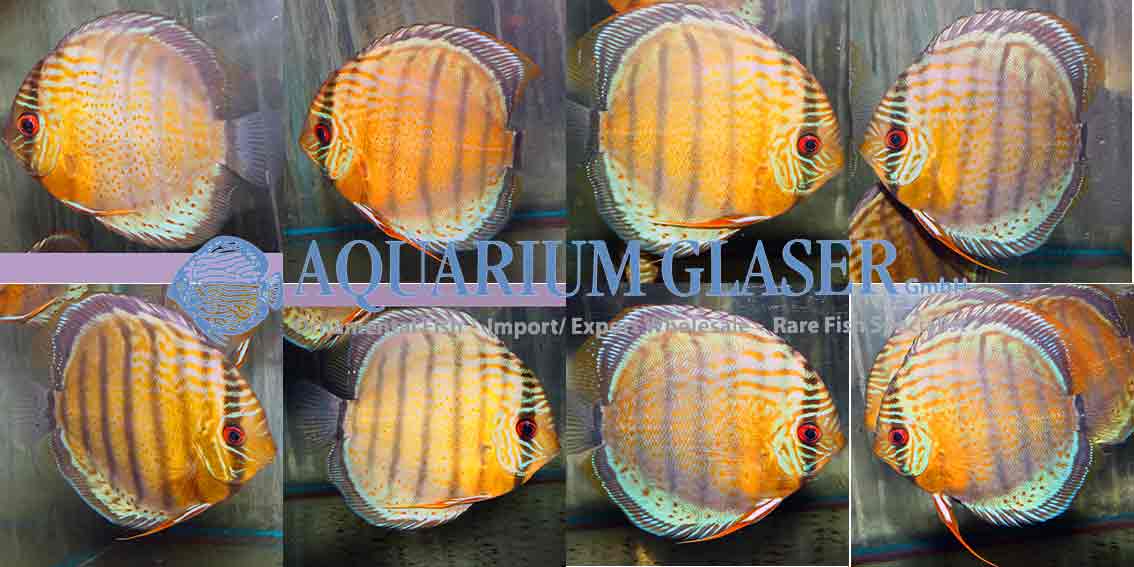
Diskus wild Nanay many spots, code 749944, size 10-14 cm
Text & photos: Frank Schäfer
Many fantastic Apistogramma arrived!
Our staff member Harald Jahn returned this week from his trip to Brazil and soon after him came the very special selected Apistogramma he ordered from the fishermen. Of course the fish have to settle a bit before we can make nice photos of them, so we show you the species in the famous pictures made by Dieter Bork from fully grown males.
The following species reached us:

Apstogramma diplotaenia – one of the most wanted Apistogramma at all, code 618641

Apistogramma elizabethae – the red bellied variety from Sao Gabriel, code 618712

Apistogramma mendezi Santa Isabel – also a red bellied variety of that beautiful animal, code 624782

Apistogramma mendezi – even the “normal” variety is a real eyeburner and rarely seen in the market, code 624812

Apistogramma sp. Miua – similar to the former, but with a different caudal fin pattern, code 624822

Apistogramma sp. Wilhelmi – a breathtaking beautiful relative of A. agassizi with a lilac chin spot, code 630713
All species are, however, available in limited numbers only. Please note that we exclusively supply the wholesale trade.
Blue Dempsey Cichlids German Bred arrived

We received very nice German bred specimens of this breathtaking cichlid. For more information on the species please click here: http://www.aquariumglaser.de/en/fish-archive/southamerican-cichlids-en/_en-4/

For our customers: the fish have code 657132 on our stocklist. Please note that we exclusively supply the wholesale trade.
Text & photos: Frank Schäfer
Scalare Red Devil

Once more we received a wonderful consignment of this attractive sport of the Angel. This time the fish are even more red than usual.
For our customers: the fish have code 697562 on or stocklist. Please note that we exclusively supply the wholesale trade.
Text & photo: Frank Schäfer
Wild Rams

Due to the regularly offered, amazing bred sports of the Ram (Mikrogeophagus ramirezi) one tends to forget, how breathtaking beautiful the wild collected fish is already. Currently we have fully grown, wild collected Rams from Venezuela in stock. By the way: wild collected Rams become only about 5 cm long (in males), females even stay smaller, so this species is definitely a dwarf cichlid!


For our customers: the animals have code 686515 on our stocklist. Please note that we exclusively supply the wholesale trade.
Text & photos: Frank Schäfer
Rams Jumbo Gold

We received Rams “Gold” in showsize from our proved breeder. Available in limited numbers only!

For our customers: the fish have code 686805 on our stocklist. Please note that we exclusively supply the wholesale trade.

Text & photos: Frank Schäfer
A brandnew dwarf cichlid! Apistogramma sp. Cristal

A completely new species of Apistogramma reached us recently from Peru. It was named “Apistogramma Cristal” by the exporter. However, this name has no scientific value at all. Available in very limited numbers only!

For our customers: the fish have code 618104 on our stocklist. Please note that we exclusively supply the wholesale trade.


Text & photos: Frank Schäfer
- « Previous Page
- 1
- …
- 5
- 6
- 7
- 8
- 9
- 10
- Next Page »





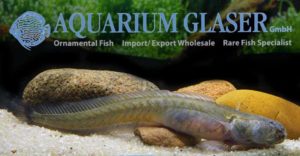
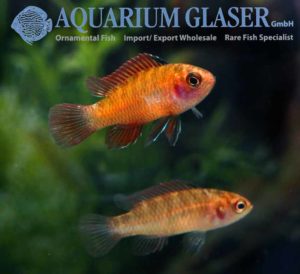
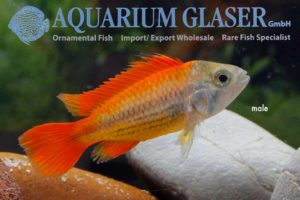
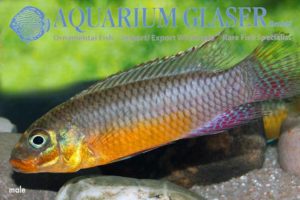
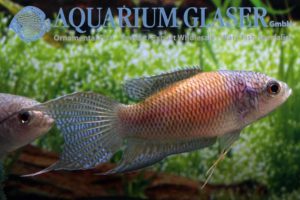
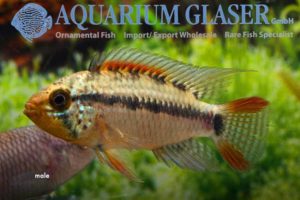
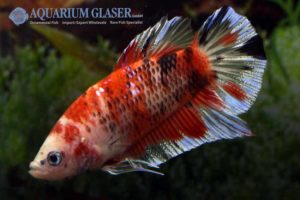
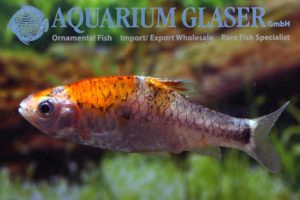
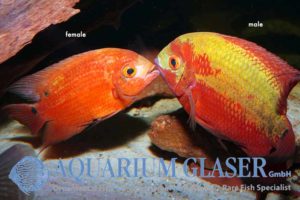
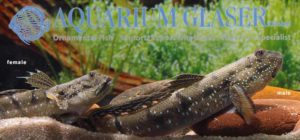
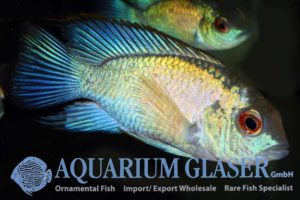
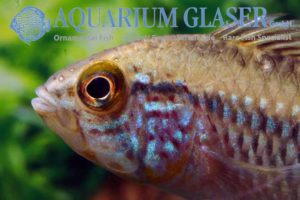
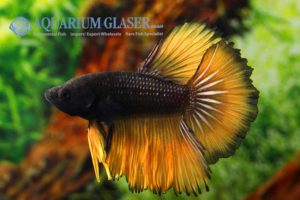
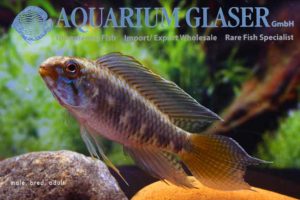
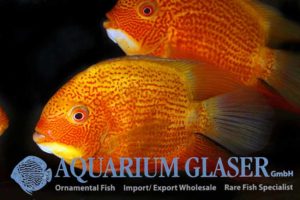
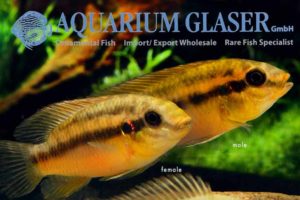
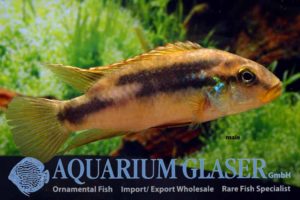
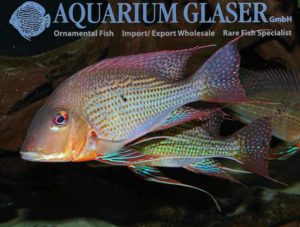
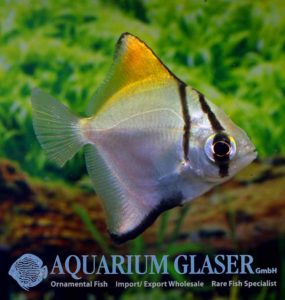
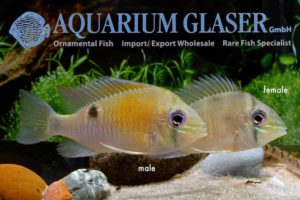
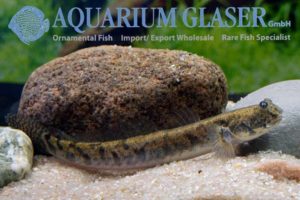
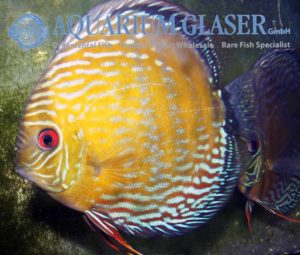
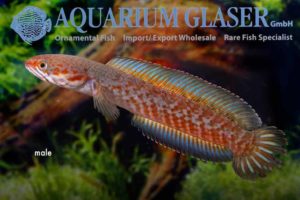
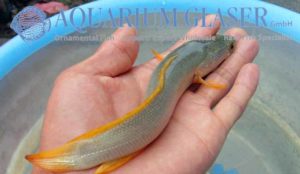
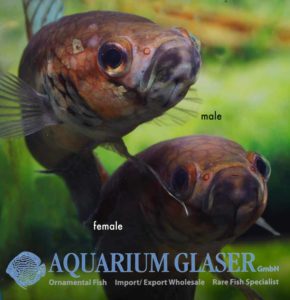
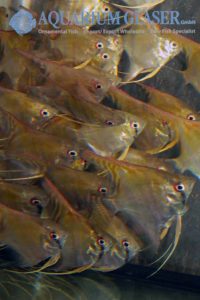
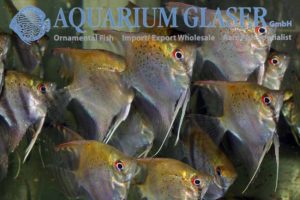
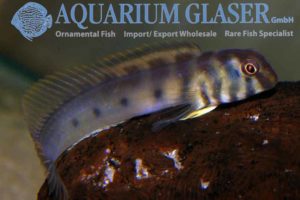
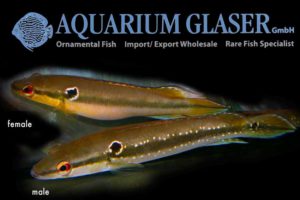
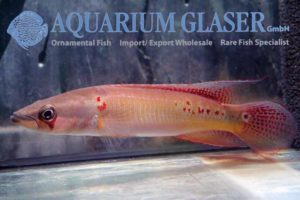
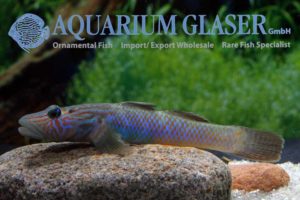
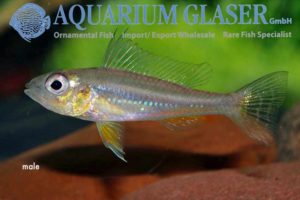
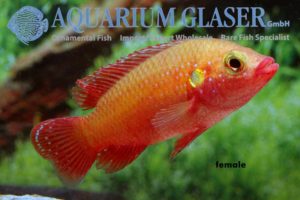
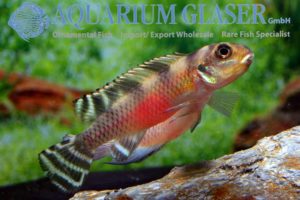
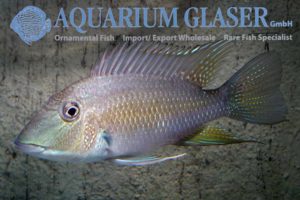
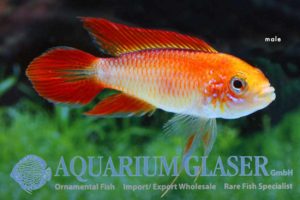
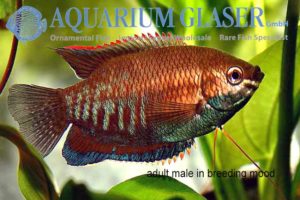
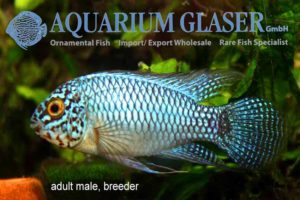
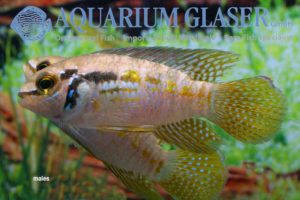
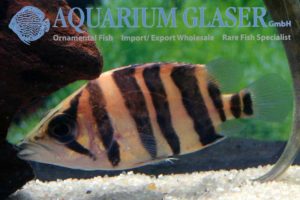
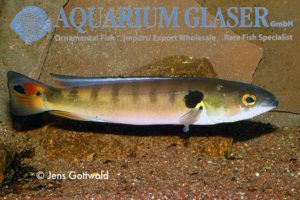
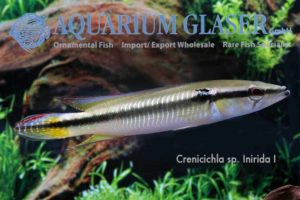
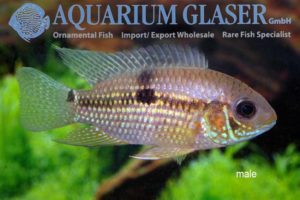
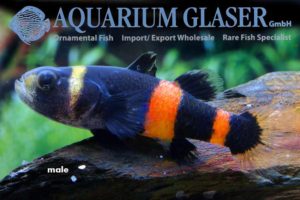
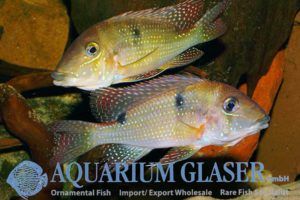
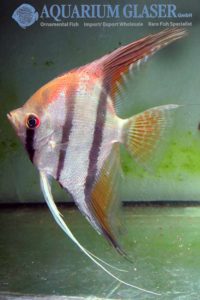
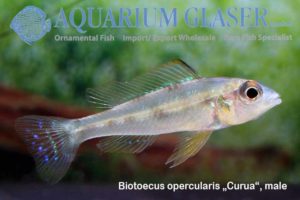
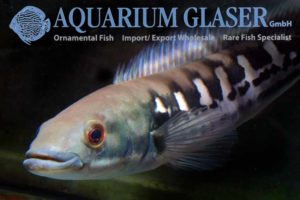
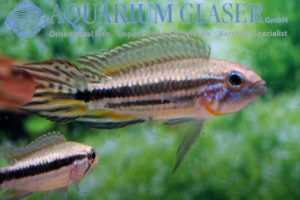
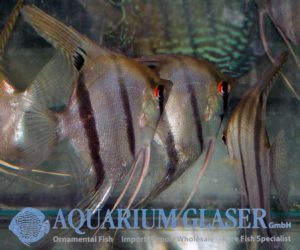
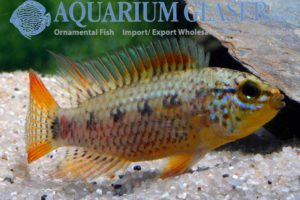
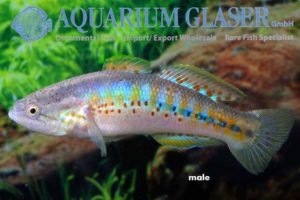
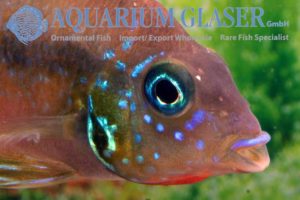
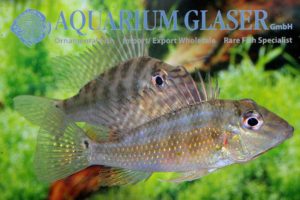
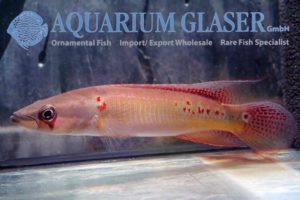
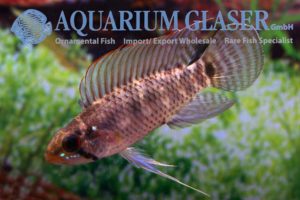
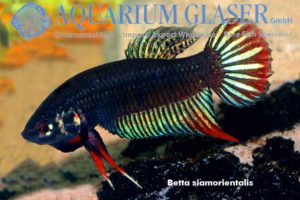
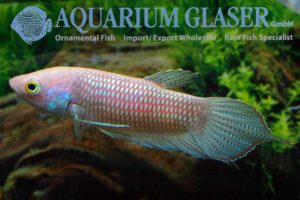
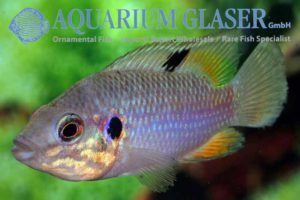
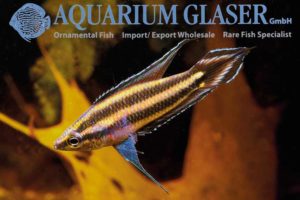
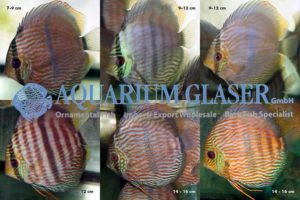
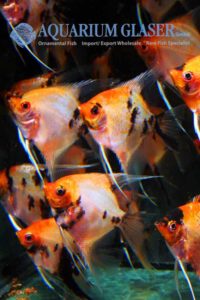
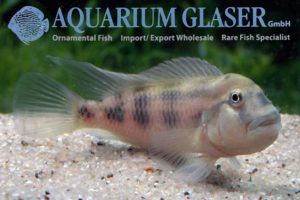
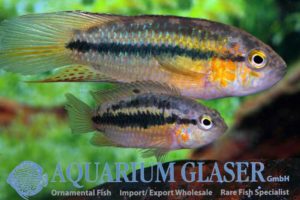
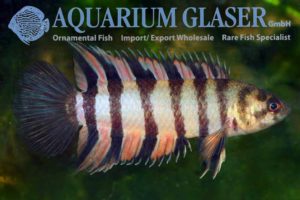
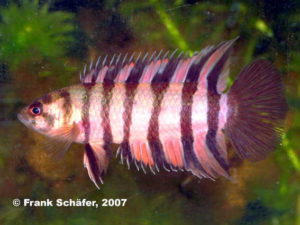
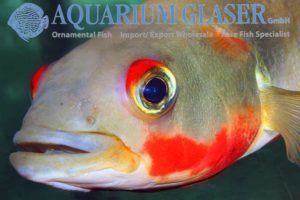
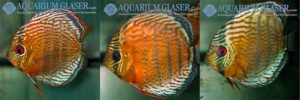
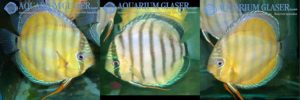
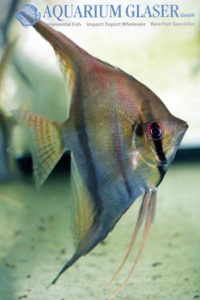
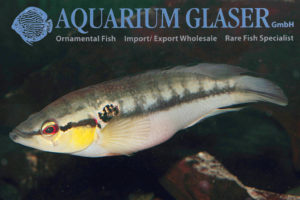
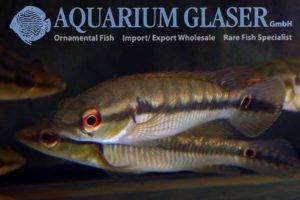
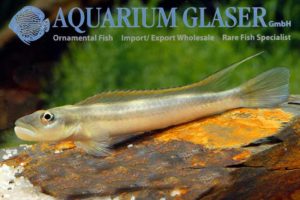
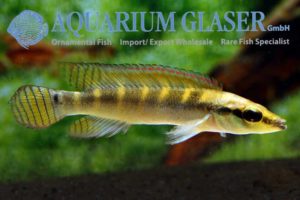
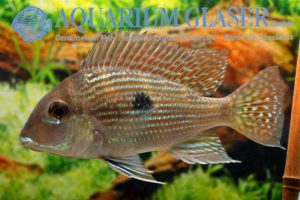
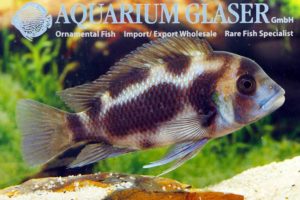
-mann-300x200.jpg)
